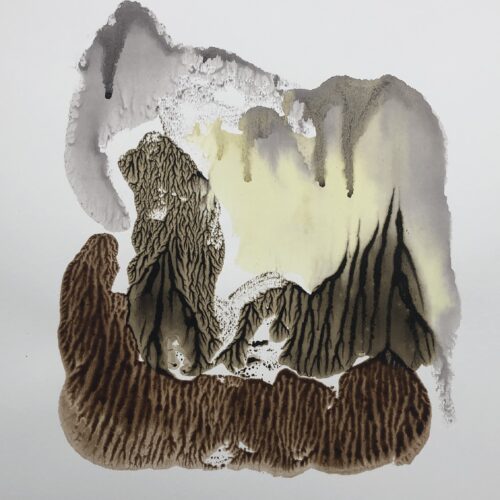
Burroughs and Bowie- Using The Cut Up Technique. Part 2
The Cut-Up technique- in which words, or fragments of ideas are combined in random combinations- has a long artistic tradition. It is popularly associated with William Burroughs (although it can be traced to the Dadaist artistic movement, who used surprise, shock and absurdity to confront the audience in new and often frightening ways).
The cut-up and the ‘fold-in’ are the two most famous techniques:
- ‘Cut-up’ is a technique in which the person uses a finished (and linear) text and cuts it in pieces with a few or single words on each piece. The resulting pieces are then rearranged into a new text.
- ‘Fold-in’ is the technique of taking two sheets of linear text, folding each sheet in half vertically and combining with the other, then reading across the resulting page. This is the technique most associate with Burroughs.
But it is not a technique purely limited to prose. David Bowie used the ‘cut up’ technique in his lyrics, to find hidden depths and outcomes in his work, as he explained here-
In his words, this technique serves to ‘Ignite anything that might be in [the] imagination’ and therefore ‘come up with very interesting attitudes to look into.’
Bowie‘s content was often drawn from his diaries, which he cut up and re-arranged have a fresh way to ‘look at things he had done where he was going’. In his words ‘a lot of the things [he] had done would predict what would happen in the future.’ He saw the technique as a kind of contemporary Tarot.
It was in fact a technique he also used in a musical sense. In his famous collaborations with Brian Eno musicians were given random instructions on cards (e.g. ‘Do something boring,’) and the results were recorded.
During the production of Bowie’s 1995 album Outside, Bowie used a sentence randomiser app that he designed purely for writing the album’s lyrics, as he discusses here –
In his words it was ‘a program that I’ve developed with a friend of mine from San Francisco, and it’s called the Verbasizer.’
He said he would ‘take a sentence, and…divide it up between the columns, and then when [he] got say, three or four or five—sometimes as many as 20, 25 different sentences going across here, then [he’] set it to randomise. And it’d take those 20 sentences and cut in between them all the time, picking out, choosing different words from different columns, and from different rows of sentences. So what you end up with is a real kaleidoscope of meanings and topic and nouns and verbs all sort of slamming into each other.’
An excerpt of his famous song ‘Hallo Spaceboy’, off Bowie’s 1995 album Outside, is said to have been mostly written with and inspired by the output of a piece of custom-made text randomisation software-
‘(Hallo) Spaceboy,
You’re sleepy now
Your silhouette is so stationary
You’re released but your custody calls’
As Bowie acknowledged, you don’t have to stick to the outcome that a random program offers. He talked of ‘imbuing’ the outcome with emotions to enhance it’ and added- ‘The key is there is something new and fresh and unexpected to respond to.’
I think these techniques have real merit, for finding hidden depths in our ideas. But they beg the question- who writes the story? Is it us, the author, or is it fate?
|
|







Are there any case studies about the cut-up method, or are there any writings by other academics who’ve discussed or examined this technique for academic purposes?
I have the original and out of print book by Brion Gyson and William S. Burroughs ‘Here to Go’ in which they discuss it; I’ve now seen videos and heard recordings of Burroughs and David Bowie individually discussing it; but I’ve not seen much more beyond blog type posts and a few journalist give a description much like what is described on this page. Is there anyone citable who makes a living academically who has dealt with this technique through the consideration of some kind of academic filter/rubric?
AI can be the upmost tecnology of reazon. we need to understand better how to access the unconscious to make better use AI in em arts. Like cut-up or meditation.